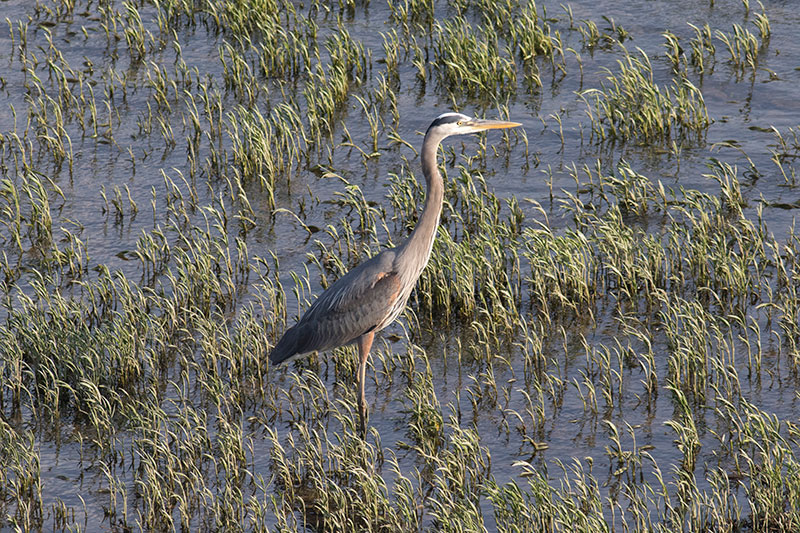Great Blue Herons
6/24/18
By David Brown

Great Blue Heron
The great blue heron (Ardea herodias) is the largest heron in North America. It stands about four feet tall and its six foot wingspan is almost as large as a bald eagle. Despite its size a great blue heron only weighs about 5 pounds. It has the distinctive shape of a wading bird with long legs and a long neck.
Despite the name, great blue herons appear gray. They inhabit across most of the lower 48 states. Great blue herons are present year-round in our region but in smaller numbers in the winter. They are common at local lakes, rivers, creeks, ponds, and wetlands. They hunt by slowly wading and grabbing prey with their long yellow bills. Their diet includes fish, amphibians, and mammals. Great blue herons nest in colonies. They usually build stick nests high in trees but will also build on other structures.
Great blue herons are migratory. They leave their northern breeding grounds as open water freezes over. In spring and fall, great blue herons migrate in groups with as many as a dozen or more individuals. They usually fly with their necks curled back in an s-shape. Their flap is slow and gives the impression of a large bird. They can fly for periods without flapping by soaring on thermals to gain lift.
Great blue herons are sometimes called cranes but this is not an accurate term. The only crane in Pennsylvania is the sandhill crane which is much less common. The green heron is common in our area from spring through fall but is much smaller and is green and red. The great egret smaller than a great blue heron but is completely white. They are most common here in late summer during post-breeding dispersal. There is a subspecies of great blue heron in Florida that is all-white and called the great white heron.
Summer is a great time to study the behavior of some of our common species. The next time you see a great blue heron take a few minutes to watch its behavior. Notice how carefully it takes each step to avoid splashing. Watch how the neck curls like a spring then unleashes with great force to strike at prey. Look at how the eyes are positioned behind the beak to give it great accuracy. If it catches a large fish watch how it manages to swallow even when the fish seems bigger than the heron's throat. Enjoy some time outside this summer appreciating nature and watching birds.